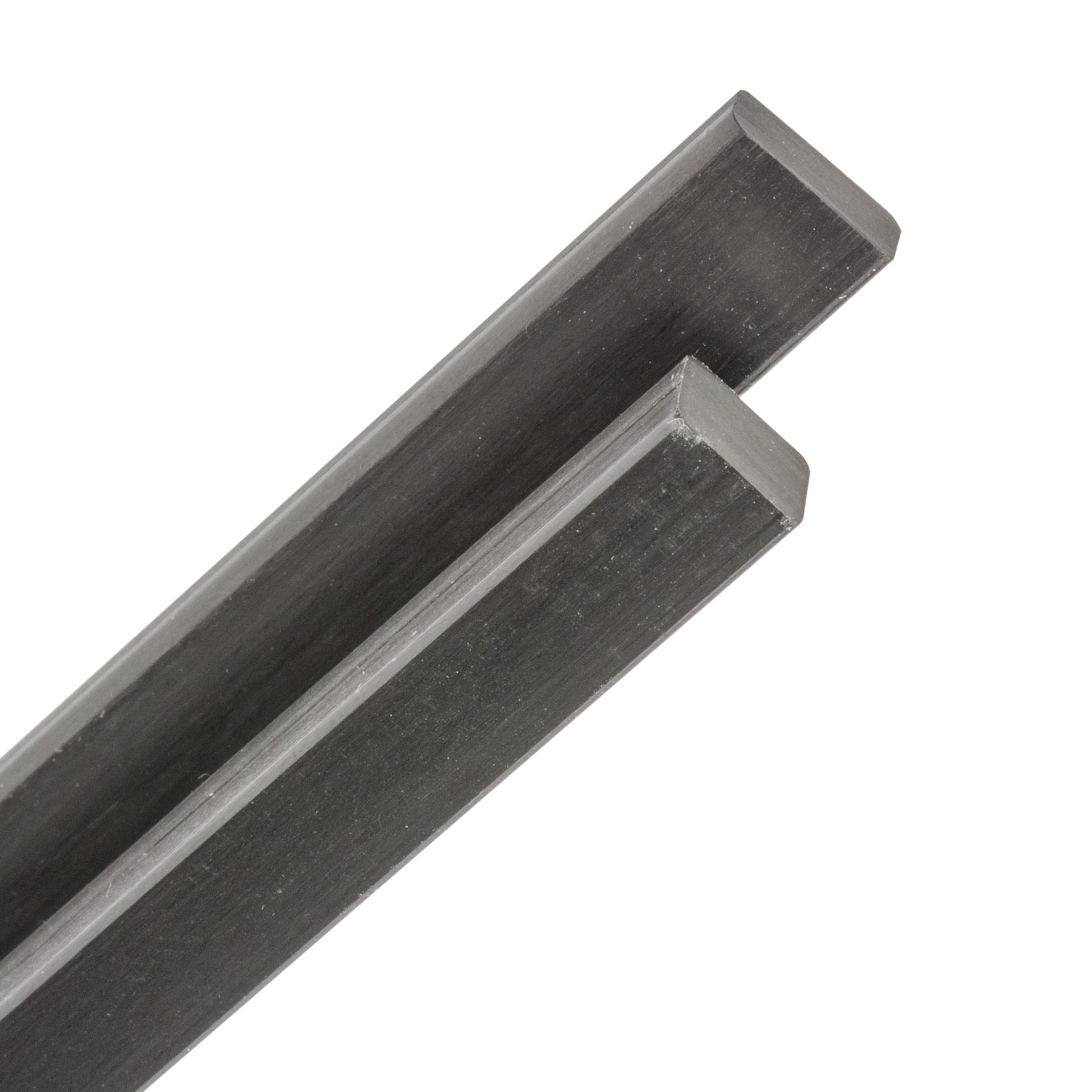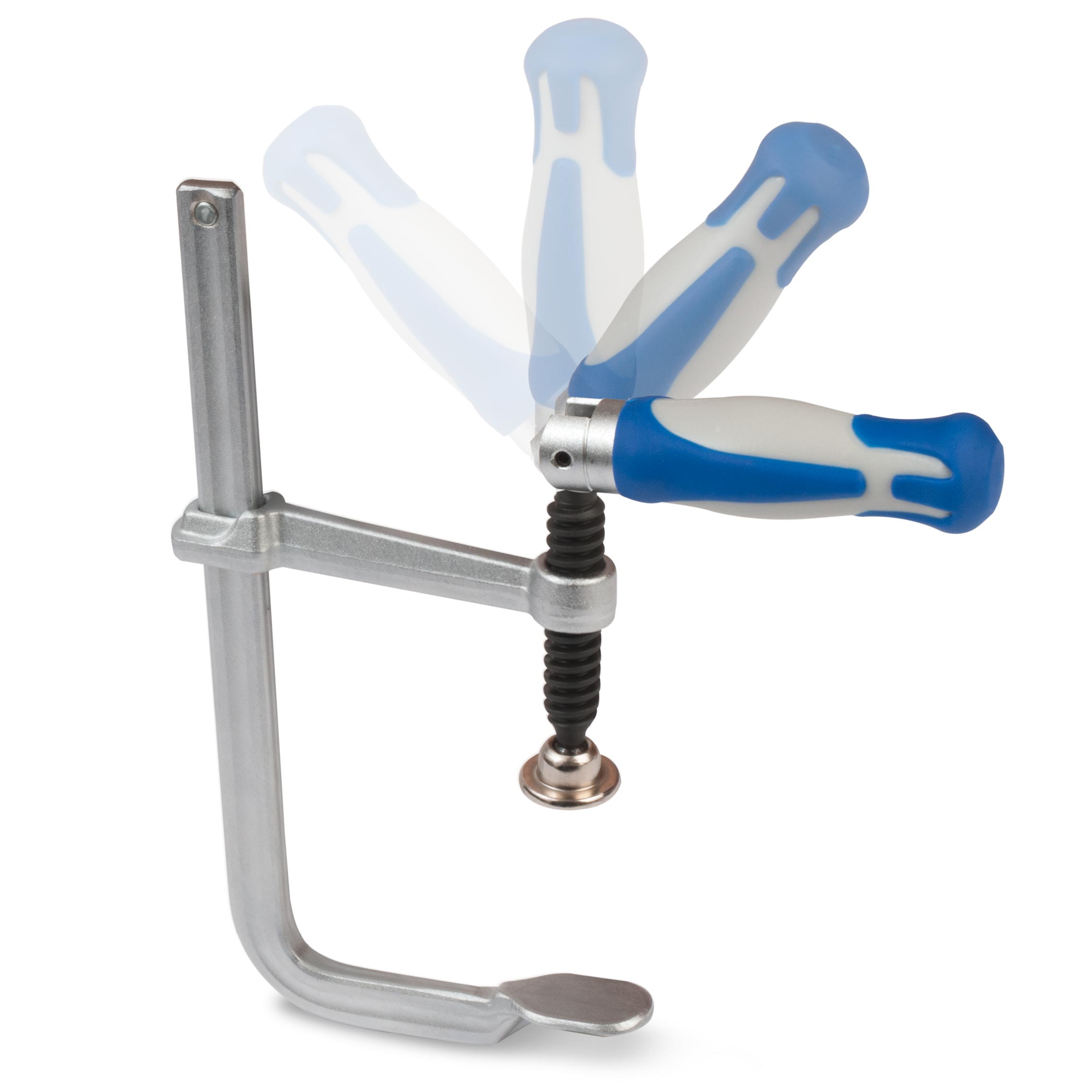Fixing a warped neck with carbon fiber
Issue 273 October 20, 2016
This early-50s Harmony StratoTone has no truss rod, and the neck is warped. Dan Erlewine repairs it by installing carbon fiber neck rods. The week after this repair was done, another copper-colored StratoTone came in with the same problem!
- Inexpensive guitar with no truss rod, but atomic-age style!
- Check out the bridge/tailpiece: like Harmony’s acoustic flattops
- How to remove the fretboard
- Routing and installing twin carbon fiber neck supports
Video Transcription
[on-screen text reads: Stewart-MacDonald Trade Secrets! Dan Erlewine Guitar Repairman, Author]
No truss rod? Make one!
Dan Erlewine: A friend and customer named Nick couldn't resist this eBay special. It's a 1954 Harmony H-44 Stratotone guitar. When it arrived, however, he found that the neck, which doesn't have a truss rod that you can adjust or any reinforcement in there, was so warped upward that he couldn't play it, except with the slide and he doesn't play slide. Well, he talked to the seller and the seller gave him back some money, enough to get this fixed and straightened right. And that's what I'm about to do. I think you're going to love this guitar.
I love this little acoustic bridge. That's what it is, miniature. It's much like any of the flat tops that they made back then, inexpensive ones with the metal tail piece. So there was no bridge pins or glue jobs, nothing like that. And it's not a gold top, it's copper top. Copper all over. And it's got a one piece neck going all the way through the body, so it's neck through. These wings are glued on. I'm curious to see what kind of wood this is. At the peghead it's very nuclear age. Look at that. You have the atom with the musical note and Stratotone. That precedes Stratocaster, because these were made from '51 to '57. Ritchie Valens, famous for La Bamba, played this guitar [on-screen text reads: 'La Bamba' was listed on Rollling Stone's 500 Greatest Songs of All Time]. You look them up online and you'll see them with it. And I think a few years ago, Harmony reissued the Richie Valens signature model, H-44, something like that. This was the real thing.
The perfect solution
In the early fifties. A lot of the inexpensive guitars, especially didn't have truss rods, not adjustable, not even a reinforcement. The little cheap guitars like this, they trusted the wood to hold and so didn't put anything in it. What I'm going to do is remove the fret board and put some stiff carbon fiber down the neck and lay it in with epoxy and then put the board back on. Carbon fiber is really strong [on-screen text reads: Carbon Fiber Neck Rods - stewmac.com]. You can hardly bend that. You can bend it on this way a little bit, but I'm going to stand it up like this, two of them, and that's really going to stiffen the neck. So first I have to take off the fret board. On the trouble side, the binding has fallen off the edge. It's cracked and chipped and fell off in pieces. I can replace that later, but it's convenient because then I can see the joint and it gives me a place to enter with my knife.
Remove the fretboard
So I thought about this for a couple of days before starting and decided, what I'm going to do, is clamp this to my bench and build a frame around it for routing with. The body is clamped, held pretty tight, I've got a Scissor Jack supporting the middle, could be a block of wood, and I'm heating up my fingerboard iron. So I'm going to start at the easiest part right up here. That's it. It's completely a dry joint. I like to work one knife on top of the other, always feeling like I'm over the wood that way. I can hear it separating, but I am going to use a little heat. So my block of aluminum is heated up to about 250 now on the top surface [on-screen text reads: Bridge Heater and Fingerboard Iron - stewmac.com]. I figure it's probably hotter on the bottom. And that's enough from my experience to get this board a little bit warmer and help break that old dry hide glue, which is what I think this must be [on-screen text reads: Bridge/Fingerboard Removal Knife - stewmac.com].
Whoa, that was the whole section that let loose there. Each time I get another half an inch or an inch. Never hurts to have a little hot water around. That's putting some upward pressure on it [on-screen text reads: Seam Separation Knife - stewmac.com]. Sometimes it'll just pop off. This could even be scary. Picking up glue now because I'm using a hot knife. In real life, right now, this has probably taking us 45 minutes. I thought this was going to pop off in 20 seconds. It was loose enough up here. I could see under that crack but I didn't anticipate this down here. I think that water and heat's helping it. Here we go. Mercy. Poplar. I guessed it would be a poplar. It's clean. This is a scientific glue test of, you light the glue and smell it. This is hide glue. When you get into glues, you'll know it. Super glue has its own smell, Titebond. That's old hide glue.
Clamp the fingerboard down
I've clamped the fingerboard face down on a 10 inch sanding beam [on-screen text reads: Aluminum Radius-sanding Beam - stewmac.com]. That's the radius. That'll keep it flat. Let it cool off and keep it from being up-curled because I did so much up-curling when I took it off. Now I can clean off the bench and set up my router table. We're about to route. This is my setup. Big clamp here, holding it tight. A web clamp off the neck, [inaudible 00:05:08] got the body down. We're on the spacer blocks. Got my platform screwed to the table. Underneath that neck is a Scissor Jack to hold it up in the middle. At this end, I took a couple of Spool Clamps, took the top spool off, drilled two holes in the bench, ran it up through this piece of wood and that's pulling down the peghead nice and tight. So they got the neck straight. Maybe even into a little bit of a back bow. That's where I want to route this thing.
Route a slot for the neck rods
I'm going to use the Otter router [on-screen text reads: The Otter Compact Router Table - stewmac.com], which is a new product that I really like. It's got a lot of area on it. So it's very steady. That's a really sharp carbide bit [on-screen text reads: Carbide Downcut Inlay Router Bit - stewmac.com]. I'm going to cut about an eighth of an inch deep at a time. And it's attached into this router with the quarter inch to eighth inch router adapter [on-screen text reads: Adapter Collet - stewmac.com] that we sell and I'm ready to route.
[on-screen text reads: Bosch Colt Router - stewmac.com]
[Dan pushes the router down the top of neck of the guitar]
Now I'll move the fence over so I can route the slot on the trouble side. Cut number two. I'll be about a quarter an inch deep. I think. I'm sorry if I'm yelling. I bet I am.
Cut and install the neck rods
Then cut some rods to fit end to end and glue them in. Now I'm going to break down the setup here so I can get at the neck and clamp the rods in with some glue [on-screen text reads: StewMac Fish Glue]. And I do them one at a time. This stuff dries like hide glue, has a lot of the same properties because it's an animal collagen glue. Fish instead of horses. I use the clamp to squeeze it down below the surface until it bottoms out, squirts out. Doesn't hurt if I wet the neck a little bit, cleaning up that glue. They're perfect just below the level of the fret board and if there's any glue residue left over, it doesn't matter, because fish glue bonds with hide glue and it bonds to it itself, because it rejuvenates from hot water. That's it.
Install the fingerboard
I have to wait overnight and put the fingerboard on tomorrow. I can't wait. I replaced the binding on the trouble side because it was missing before gluing this on [on-screen text reads: Bind ALL Guitar Binding Glue - stewmac.com]. It's easier now than it would be later. And I'm just putting some hot water on this wood. So it'll draw in the glue a little bit better. I like to keep the brush a little bit wet and hot. The advantage of this fish glue, is it's just about as great as a hot hide glue, but it has a longer open time. I'd be scared right now if this was hide glue. It'd be cooling off.
There you go. I'm not in a hurry now because it'll take a few seconds till it tacks up. I took two eight inch long, 10 inch radius fretboard standing blocks, found a center line and cut them to the exact shape of the fingerboard on center. That's going to be my gluing call. In fact, it's going to be a gluing call for years to come. I've got a number of these with different radii [on-screen text reads: Swivel Handle Clamp - stewmac.com]. I'm not squeezing really hard. I'm trying to keep those clamps nice and square because if you get out of kilter, the pressure of the clamp tightening will draw the board to one side or the other. This one's going perfect. That's it. Whew. Going to let this dry till tomorrow and...
Woohoo, it's straight. Waited overnight, cleaned up that binding. I've got a straight edge on it. It's got a little bit of relief. It's a straight neck thanks to the carbon fiber rods and a good glue job. I'm curious to see how it sounds. I know it'll sound old.
[Dan picks up the guitar and starts playing a slow song]





